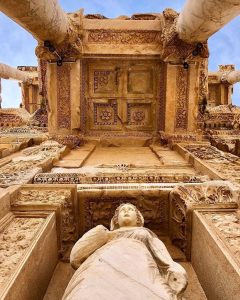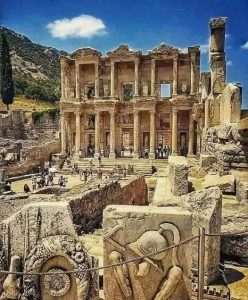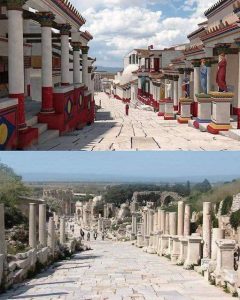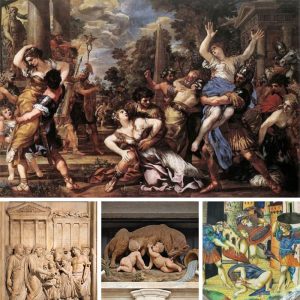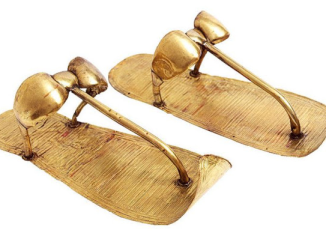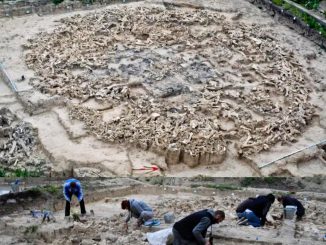In the heart of ancient Ephesus, a city rich with historical treasures, stands one of the most magnificent structures of the Roman Empire—the Library of Celsus. Constructed between 110 and 135 AD, this library not only served as a monumental repository of knowledge but also as a tomb for its namesake, Tiberius Julius Celsus Polemaeanus, the Roman senator and general who funded its construction.
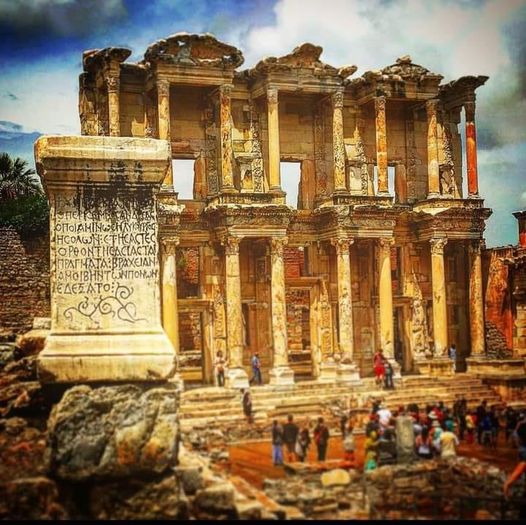
The Library of Celsus, as depicted in the stunning photograph, is renowned for its dramatic façade, which is a masterpiece of Roman architectural design. The library was originally built to store 12,000 scrolls and to serve as a monumental tomb for Celsus, a rare honor conferred by the Romans, indicating his importance and the esteem in which he was held.
Architecturally, the library is a striking example of the sophistication of Roman building techniques and artistic sensibilities. The front of the library is an exquisitely decorated two-story structure featuring a combination of Corinthian and Ionic columns. The façade is adorned with statues representing wisdom (Sophia), knowledge (Episteme), intelligence (Ennoia), and virtue (Arete), encapsulating the values that the library was intended to promote.
The photograph captures the library’s ornate façade, which has been remarkably preserved and painstakingly restored. The central entrance is flanked by sets of columns, leading to a once-grand interior, structured to maximize the light that illuminated the precious scrolls. Although the interiors have not survived as well as the façade, the overall layout was designed to protect its contents from the weather, particularly the humidity that could damage the scrolls.
This majestic library was more than just a storage site for scrolls; it was a cultural hub in Ephesus. Positioned at the center of public life, it played a significant role in the intellectual and social activities of the city. Philosophers, scholars, and students would have gathered here, not only to access the texts but also to engage in debate, discourse, and learning.
The significance of the Library of Celsus extends beyond its historical and architectural value. It stands as a testament to the Roman emphasis on education and culture, reflecting a period when Ephesus was a focal point of knowledge and learning in the classical world. The library’s construction in Ephesus, a city celebrated for its strategic location and vibrant cultural life, underscores the city’s importance in the ancient world as a center of trade, politics, and education.
Today, the Library of Celsus remains one of the most visited archaeological sites in Turkey, attracting tourists and scholars alike. It offers a vivid glimpse into the past, showcasing the grandeur of Roman architecture and the value placed on knowledge and learning in ancient societies. For modern visitors, the library provides a tangible connection to the ancient world, inspiring awe and a deep appreciation for the cultural and intellectual achievements of antiquity.
